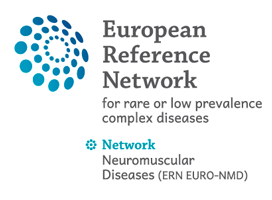30 Jan 2019
Exploration of New Contrasts, Targets, and MR Imaging and Spectroscopy Techniques for Neuromuscular Disease
Authors:
Gustav J Strijkers, Ericky C,A Araujo, Noura Azzabou, David Bendahan, Andrew Blamire, Jedrek Burakiewicz, Pierre G. Carlier, Bruce Damon, Xeni Deligianni, Martijn Froeling, Arend Heerschap, Kieren G. Hollingsworth, Melissa T. Hooijmans, Dimitrios C. Karampinos, George Loudos, Guillaume Madelin, Benjamin Marty, Armin M. Nagel, Aart J. Nederveen, Jules L. Nelissen, Francesco Santini, Olivier Scheidegger, Fritz Schick, Christopher Sinclair, Ralph Sinkus, Paulo L. de Sousa, Volker Straub, Glenn Walter, Hermien E. Kan.
A Workshop Report of Working Group 3 of the Biomedicine and Molecular Biosciences COST Action BM1304 MYO-MRI
Neuromuscular diseases are characterized by progressive muscle degeneration and muscle weakness resulting in functional disabilities. While each of these diseases is individually rare, they are common as a group, and a large majority lacks effective treatment with fully market approved drugs. Magnetic resonance imaging and spectroscopy techniques (MRI and MRS) are showing increasing promise as an outcome measure in clinical trials for these diseases. In 2013, the European Union funded the COST (co-operation in science and technology) action BM1304 called MYO-MRI (www.myo-mri.eu), with the overall aim to advance novel MRI and MRS techniques for both diagnosis and quantitative monitoring of neuromuscular diseases through sharing of expertise and data, joint development of protocols, opportunities for young researchers and creation of an online atlas of muscle MRI and MRS. In this report, the topics that were discussed in the framework of working group 3, which had the objective to: Explore new contrasts, new targets and new imaging techniques for NMD are described. The report is written by the scientists who attended the meetings and presented their data. An overview is given on the different contrasts that MRI can generate and their application, clinical needs and desired readouts, and emerging methods.

